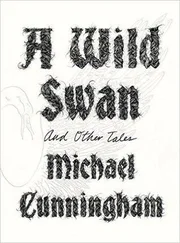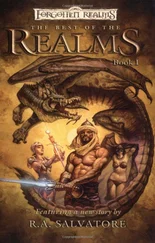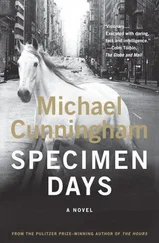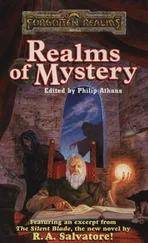He times his ascent of the staircase with that of Bette, who climbs at a smoker’s pace. She’s just had a Marlboro Light in front of the museum, and said, in response to the skeptical glance Peter had decided against, “Trust me, a cancer scare is not the time to give up smoking.”
At the top of the stairs, Tiepolo’s Marius continues to triumph. The boy continues banging on his tambourine.
On the way to the contemporary galleries, Peter pauses before the Rodin at the entrance to Nineteenth-Century European. Bette gets a few paces ahead, turns, and comes back.
“Still here,” she says. They came for the Hirst, why is Peter stopping? Hasn’t he seen the Rodin a thousand times?
Peter says, “You know how…”
“Yes?”
“How something pops out at you sometimes?”
“Today, Rodin pops out?”
“Yeah. I don’t know why.”
Bette settles beside Peter with that aspect of mother-alligator calm she can summon. This is probably how she was with her sons when they were small, when they were fascinated by something that bored her—this attitude of informed but charitable willingness. This would be part of why they turned out okay.
She says, “No denying its merits.”
“No.”
Here, as always, is Auguste Neyt, aka The Vanquished , aka The Bronze Age : perfect bronze man-child, exactly life-size, trim and lithe, holding his invisible spear. Rodin was still unknown when he sculpted and cast this naked man, sans Ancient Greek musculature or French devotion to allegory; Rodin a minor figure then but proven right by time—the heroic was dying out, the real was arriving for a long, long stay. Now Rodin has been and gone and yes, of course, he’s part of history, but new artists don’t revere him, no one makes a pilgrimage, you learn about him in school, you pass his sculptures and maquettes on your way to see the Damien Hirst.
Still. It’s fucking bronze, it could last forever (didn’t the Koenig sphere survive 9/11?). Alien archeologists might unearth it one day and really, would it be such bad evidence of who and what we were? Auguste Neyt, centuries dead by then, his name lost but his form preserved, nude, unidealized, merely young and healthy, with his life ahead of him.
“Okay?” Bette says.
“Okay.”
They walk quietly and with purpose by the Carrière and Puvis de Chavannes, past Gérôme’s Pygmalion kissing Galatea. At the gallery’s far end they turn, pass the books-and-gifts kiosk, turn again.
And there it is, the shark, suspended in its pale blue, strangely lovely formaldehyde; there is the lethal perfection of its shape and here is its maw, jagged, big as a barrelhead, the business end—is there any other creature so clearly intended to be a mouth propelled by a body?
It remains a jolt; it still produces that prickle of animal panic along the surface of Peter’s skin. Which is, of course, one of the questions. Who isn’t going to be moved by a thirteen-foot-long dead shark floating in a tank of formaldehyde?
Peter’s stomach lurches. The queasiness is worse after he eats. He should probably go to the doctor.
“Hm,” Bette says.
“Hm.”
It has to do with the immaculate packaging, Peter thinks—the hefty but pristine white steel tank (twenty-two tons), the azure solution in which the creature floats. The shark is so entirely contained, so utterly dead, its eyes opaque, its hide hoarily wrinkled. And yet…
“It’s something, seeing it here,” Bette says.
“It is something.”
The Physical Impossibility of Death in the Mind of Someone Living . Yes. It’s something.
Three girls and a boy, fourteen or fifteen, circle nervously around the tank, appalled, deciding how exactly to mock it. A little boy holds his father’s hand and says, “This is scary?”—posed as a question. A middle-aged couple stands by the shark’s tail, huddled, conferring gravely in what sounds like Spanish, consulting each other, as if they’ve been sent to do something painful but necessary, for the greater good.
Bette says, “This one’s a female.”
“Do you think they should have kept the first one?”
“There was no way Steve Cohen was going to have paid eight million bucks and just watch the goddamned thing disintegrate.”
“No. No way.”
“It’s a little hard to see it at this point,” Bette says. “I mean, there’s the object, and then there’s Hirst’s career, not to mention Hirst himself, and there’s Cohen’s eight million and the Met thinking it’s daring to show something that’s been around almost twenty years…”
The high school kids gather before the shark’s midsection, all but trembling with fear and sexuality and disdain, speaking softly in a private language (Peter catches bits: “—you’re such a handbag—” ( handbag , no, he must have misheard) “—never have—” “—Thomas and Esme and Prue—”). One of the girls puts a hand on the glass, pulls it quickly away again. The other two girls shriek and run from the gallery as if their friend has set off an alarm.
Bette strides up to the front of the tank, bends over slightly to see into the shark’s open maw. The girl who touched the glass remains, the boy beside her. She fingers the seam of the boy’s jeans. Young lovers, then. The girl’s face is resolute, small-mouthed, something pious about it—she could be Amish, never mind the Courtney Love T-shirt and green leather jacket. She is a handsome and probably intelligent girl contemplating a shark alongside her boyfriend (who is gay, anyone can see it, does he know that yet, does she?), and Peter is briefly in love with her, or anyway with who and what she’ll become (there she is ten years from now, in a tight little sparkly dress, laughing, at a party somewhere), and then the boy whispers to her and they leave, and Peter will never see her again.
Bea is angry with him in a way that feels permanent, but hey, she’s only twenty years old. Still. She’s diminishing, up there in Boston; she’s thin and pale and tightly wound, no boyfriends, no discernible passions beyond her determination to do something practical with her life, her conviction that art is ridiculous, by which she means Peter is ridiculous, by which she means he seduced her, all those years, into loving him too much and Rebecca too little, which she has recently come to understand is the source of her persistent loneliness and intermittent depression, her disappointment in men and her trouble connecting with women.
“It’s impressive,” Bette says, of the shark. “You let yourself think, oh, it’s a gesture, it’s just a dead shark, every natural history museum is full of them, but then you stand in a gallery with it, and, well…”
Bette has grown bottom-heavy with age. She is wearing black Reeboks. As she leans unafraid toward the mouth of the shark, she is touching but not heroic—no, she is perhaps heroic in her way but she is not potent, she does not possess even Ahab’s doomed and fanatic grandeur though she has, in her life, had some measure of his crazy conviction (think of the artists she’s taken on). But now, on a Sunday afternoon at the Met, she is an old woman looking into the mouth of a dead shark.
Peter goes and stands beside her. “It’s an impressive gesture,” he says.
Behind Peter’s and Bette’s dim reflections on the glass, the shark’s jaws gape—there are the rows of lethal, serrated teeth, and beyond, pickled white, is the orifice itself, which takes on the shade of the solution’s blue, grayed and deepened, as it recedes into the shark’s own inner darkness.
Bette has not told Peter the truth. Not the whole truth. The surgeon didn’t get all the cancer, she’s not going to be all right. Peter knows this with a tingling immediacy that’s like the creaturely alertness produced by the shark itself. An infinitesimal length of tape self-erases in his brain, and he’ll never know if he understood at JoJo’s or later that Bette is, in fact, dying, and will do so sooner rather than later. That’s why she’s closing the gallery right now . That’s why Jack is leaving Columbia.
Читать дальше
Конец ознакомительного отрывка
Купить книгу












